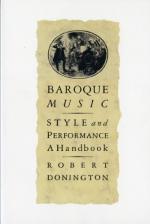|
This section contains 1,468 words (approx. 5 pages at 300 words per page) |

|
Changing Tastes.
During the first decades of the eighteenth century, a new decorative style emerged in the visual arts in France, and soon spread to many other parts of Europe. Characterized by a lighter spirit, swirling lines, and a propensity for everyday themes of enjoyment, this style was to become known as the Rococo or Rocaille. The word derived from a plasterer's term to describe this craft's technique of imitating the forms of rocks and boulders. Since the late Renaissance, plasterers had been employed throughout Europe creating fanciful grottoes in the gardens of the nobility. Around 1700, though, the techniques that the craft used to build up plaster came to be used in the interiors of royal residences and Parisian townhouses, and walls that were heavily encrusted with plaster designs suddenly became all the rage in France. These rocaille techniques later lent their name to the entire...
|
This section contains 1,468 words (approx. 5 pages at 300 words per page) |

|




